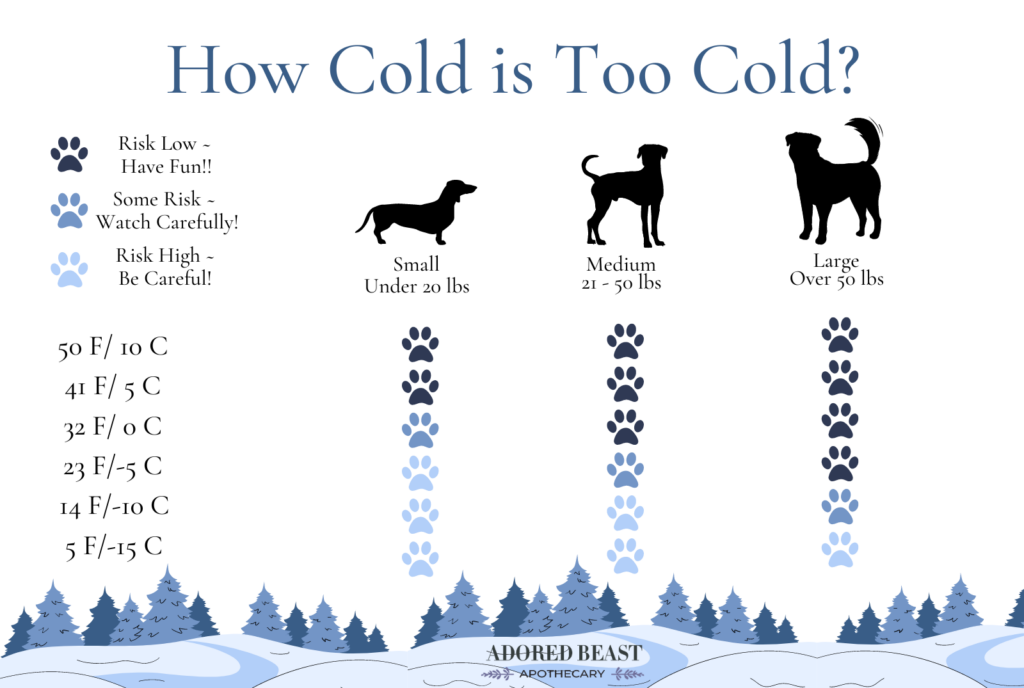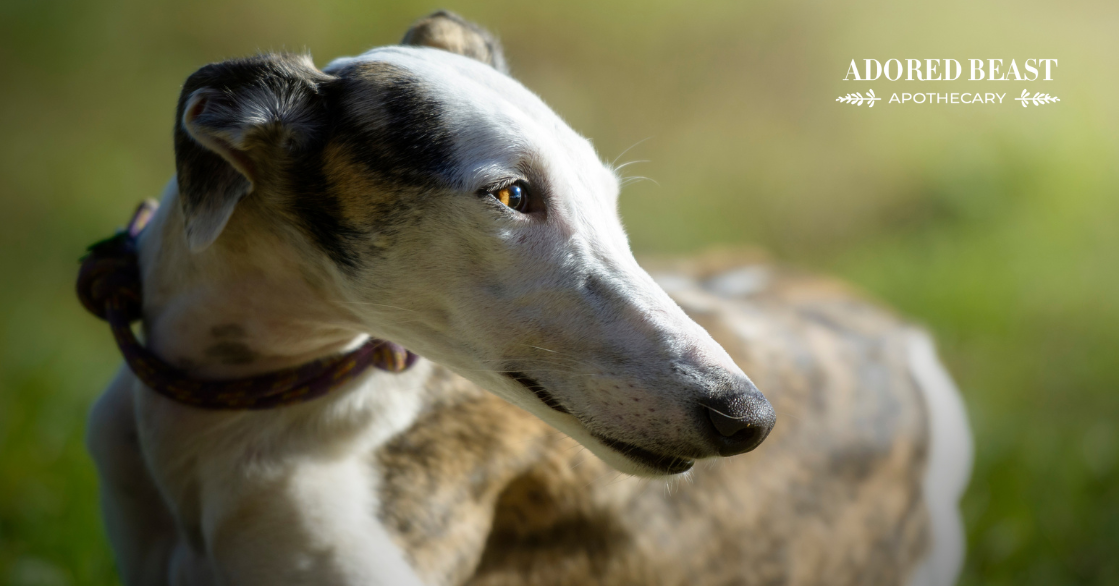This week, up here in Ontario, the weather has been surprisingly mild. The snow has been melting, and we’re finally seeing some sunshine. We’re not ready for the spring to arrive just yet (at least not our family), but the milder temps are not unwelcome.
Part of that is probably because a week ago we were dealing with -30 degrees Celsius (-22 Fahrenheit). In some parts of Canada (and the United States as well), it was even colder! That’s pretty darn cold.
And at those temps, we weren’t doing much walking. Whatever the weather you’re facing right now, chances are, you’ve asked yourself at least once before, “is it too cold to walk my dog”?
Now, as with almost any question related to our canine companions, it’s not always a simple yes or no answer. So today, we’re going to get out that snow shovel and dig deep to give you some things to consider about the cold weather and walking, and some tips to keep those paws and noses (and entire bodies) safe.
Is it Too Cold to Walk My Dog: Factors to Consider
Cold temperatures pose significant risks to our furry family members. Prolonged exposure (and it doesn’t have to be hours here) can result in a drop in body temperature, leading to hypothermia, which can quickly turn serious. Frostbite is another risk, especially for those delicate paws and ears. Knowing this, it’s important to pay attention to that thermometer.
As mentioned, there are many factors to consider that can impact the yes or no to “is it too cold to walk my dog.”
- Breed: Certain breeds, such as Siberian Huskies, Alaskan Malamutes, and Bernese Mountain Dogs, are better equipped to handle colder temperatures due to their thick, insulating, double-coated fur coats. In contrast, dogs with short hair, like Chihuahuas or Greyhounds, may need additional protection in chilly weather.
- Colour: The colour of you dog’s coat can also impact their cold tolerance. For example, a black coat will attract the sun, making your dog warmer, whereas a white coat won’t help. Think about it like wearing a black t-shirt or driving a black car in the summertime.
- Size: Connected somewhat to breed,smaller dogs tend to have a much lower cold tolerance than bigger dogs. But weight matters too. Overweight dogs have extra insulation that provides more warmth than slender dogs.
- Age/Health: Very young and older dogs may have difficulty regulating their body temperature, making them more susceptible to the cold. The same goes for dogs with health conditions – they may be more susceptible to the cold.
- Acclimatization: How used to the cold is your pup? Have they grown up in the snow? If so, they’re probably better equipped to handle it. Are they only used to short walks in colder weather? If so, a long winter hike may not be something they’re ready to do. And we mentioned breed, but there are caveats. If your husky has only known warm weather, their breed doesn’t automatically mean they can handle really cold weather all of a sudden.
- Activity: I know we’re talking about walking specifically, but outside time in general is worth covering. And so, keep in mind the level of activity. If your dog is running around, engaging in active play, etc., as compared to leisurely walking, they may be better able to handle a lower temp.
Also, keep an eye on things like cloud cover and wind. These can make it feel even colder out. And beware of sleet or rain – if your dog’s coat gets wet, they’re going to feel much colder, much more quickly!
With all of that in mind, and while we are always hesitant to give actual yes or no temperatures for “Is it too cold to walk my dog,” these are very general guidelines that might help:

In general, things start to get dicey for small dogs around 32F/0C. As the temps drop, even larger dogs/dogs with thicker coats will start to get uncomfortable. By 5F/-15C it may be too cold for most dogs. BUT!! All dogs are different with different tolerance levels. We urge you to take your individual dog’s needs into consideration.
Just remember, when in doubt – even if it’s just a teensy bit – skip the walk. Find ways to engage your pup inside. Check out this post for some brain games that’ll tire our your pup when the weather just refuses to cooperate!
When You’re Walking: Tips & Signs to Watch For
Ok, so you’re ready to walk.
Let’s start with some tips to make the walk safe and enjoyable.
- Consider a coat or snood (a hood to cover the ears) if your dog is sensitive.
- Booties or a protective paw balm can help protect those sensitive paw pads.
- Watch that windchill – it can result in frostbite.
- Split up the walk. If your normal walk is 30 minutes, maybe split it into two 15 minute walks.
- Walking in wooded areas is a good way to protect them from chilly wind gusts.
- Stick close to home in case the weather turns on you.
While you’re out walking, watch out for these signs. If you notice them, turn around and head for home:
- Excessive shivering: If your dog is shivering uncontrollably, it’s a sign they’re too cold.
- Lifting their paws: If your dog keeps lifting their paws or appears reluctant to walk, the cold may be uncomfortable or painful.
- Whining: Dogs might cry, whine, or bark if they’re feeling too cold.
- Excessive drooling
- Changes in behaviour: Unusual lethargy, disinterest in activities, or signs of distress can all indicate discomfort.
When considering, “is it too cold to walk my dog,” you want to think about all the different factors at play. It’s important to remember that all dogs have unique personalities and needs – your dog may be very different from your neighbour’s, even if they’re the same breed, age, and size! Pay attention to your pup. Watch closely, and let them tell you when it’s too cold. We all want to spend time outside, but sometimes, it’s ok to curl up on the couch or play some brain games inside.












